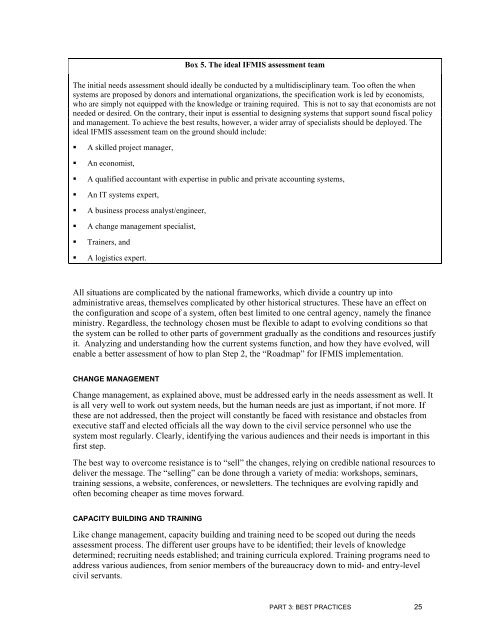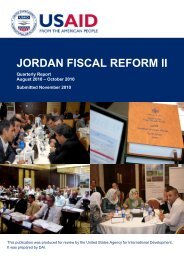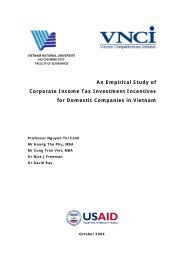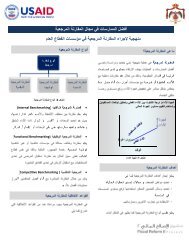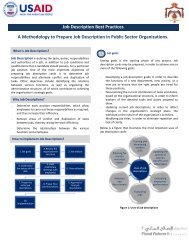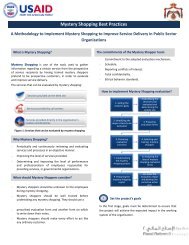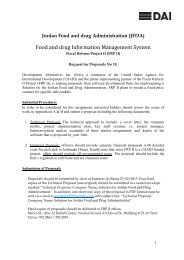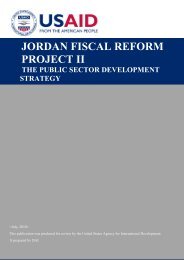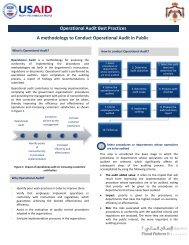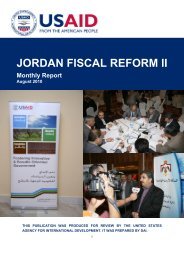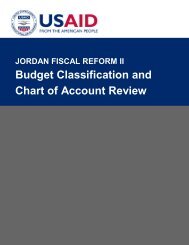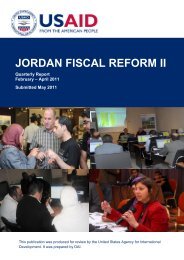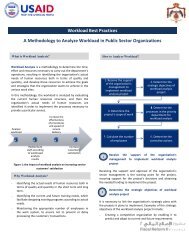Integrated Financial Management Information Systems: A ... - Frp2.org
Integrated Financial Management Information Systems: A ... - Frp2.org
Integrated Financial Management Information Systems: A ... - Frp2.org
You also want an ePaper? Increase the reach of your titles
YUMPU automatically turns print PDFs into web optimized ePapers that Google loves.
Box 5. The ideal IFMIS assessment team<br />
The initial needs assessment should ideally be conducted by a multidisciplinary team. Too often the when<br />
systems are proposed by donors and international organizations, the specification work is led by economists,<br />
who are simply not equipped with the knowledge or training required. This is not to say that economists are not<br />
needed or desired. On the contrary, their input is essential to designing systems that support sound fiscal policy<br />
and management. To achieve the best results, however, a wider array of specialists should be deployed. The<br />
ideal IFMIS assessment team on the ground should include:<br />
A skilled project manager,<br />
An economist,<br />
A qualified accountant with expertise in public and private accounting systems,<br />
An IT systems expert,<br />
A business process analyst/engineer,<br />
A change management specialist,<br />
Trainers, and<br />
A logistics expert.<br />
All situations are complicated by the national frameworks, which divide a country up into<br />
administrative areas, themselves complicated by other historical structures. These have an effect on<br />
the configuration and scope of a system, often best limited to one central agency, namely the finance<br />
ministry. Regardless, the technology chosen must be flexible to adapt to evolving conditions so that<br />
the system can be rolled to other parts of government gradually as the conditions and resources justify<br />
it. Analyzing and understanding how the current systems function, and how they have evolved, will<br />
enable a better assessment of how to plan Step 2, the “Roadmap” for IFMIS implementation.<br />
CHANGE MANAGEMENT<br />
Change management, as explained above, must be addressed early in the needs assessment as well. It<br />
is all very well to work out system needs, but the human needs are just as important, if not more. If<br />
these are not addressed, then the project will constantly be faced with resistance and obstacles from<br />
executive staff and elected officials all the way down to the civil service personnel who use the<br />
system most regularly. Clearly, identifying the various audiences and their needs is important in this<br />
first step.<br />
The best way to overcome resistance is to “sell” the changes, relying on credible national resources to<br />
deliver the message. The “selling” can be done through a variety of media: workshops, seminars,<br />
training sessions, a website, conferences, or newsletters. The techniques are evolving rapidly and<br />
often becoming cheaper as time moves forward.<br />
CAPACITY BUILDING AND TRAINING<br />
Like change management, capacity building and training need to be scoped out during the needs<br />
assessment process. The different user groups have to be identified; their levels of knowledge<br />
determined; recruiting needs established; and training curricula explored. Training programs need to<br />
address various audiences, from senior members of the bureaucracy down to mid- and entry-level<br />
civil servants.<br />
PART 3: BEST PRACTICES 25


